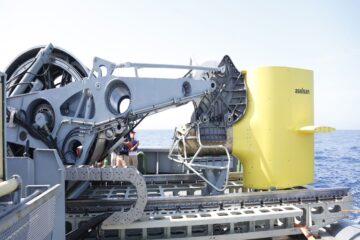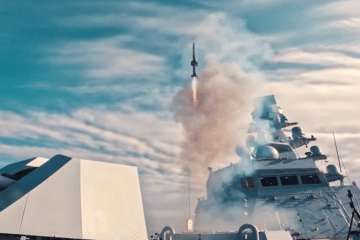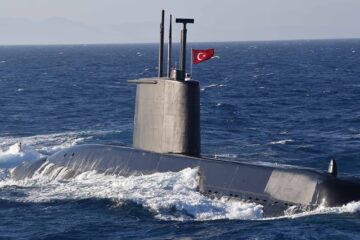Sponsored content

PELIKAN Missile Seeker Simulator, completely designed and manufactured by Turkish company Meteksan Defence, is a Naval Electronic Warfare test and evaluation asset designed to evaluate surface ship platforms onboard Electronic Defence and Electronic Attack System effectiveness.
PELIKAN can be used for evaluating the effectiveness of a ship’s electronic warfare techniques (ESM, ECM, RF Chaffs/ decoys, etc.), simulation for Radar ECM techniques development, evaluation, testing & verification, and electronic warfare equipment testing & evaluation.
Once the emulated attack commences, real-time information is available regarding the emulated missile’s behavior so that live evaluation of the effectiveness of the countermeasures employed by the target ship can be assessed. In addition, PELIKAN Missile Seeker Simulator records all relevant data to enable further analysis to be undertaken once the simulation phase of the trial is complete.
Realistic Simulation

PELIKAN Missile Seeker Simulator provides ship personnel to be trained in the use of EW equipment and the development of avoidance and distraction tactics against simulated threats. PELIKAN can accurately emulate the behavior of a specific anti-ship missile’s RF seeker so that the system appears to be a real example of the missile in question from the target’s (ship’s) perspective.
In addition, PELIKAN also reacts to electronic warfare countermeasures that are carried out by the target ship. The system can be configurable so it can be programmed to emulate a wide variety of anti-ship missile seeker radars across a range of guidance techniques. PELIKAN can simulate several different missile seeker radar types by varying parameters such as frequency, pulse width, pulse repetition frequency, gate size, pulse modulation, polarization, and detection criteria.
Real-time Operation
PELIKAN Missile Seeker Radar Simulator is largely autonomous in terms of its operation as once programmed and started, it operates exactly as the intended missile’s RF seeker would. The system consists of a master controller and up to three remote emitters. It contains three missile seeker radars integrated into a single transportable shelter. System control is provided by consoles inside the shelter, which enable operators to configure different seeker parameters.
PELIKAN has a multi-purposed GUI. It provides a control interface, diagnostic interface, and Own Ship Data interface to the user. Real-time information is available regarding the emulated missile’s behavior so that live evaluation of the effectiveness of the countermeasures employed by the target ship can be assessed. In addition, PELIKAN Missile Seeker Radar Simulator records all relevant data to enable further analysis to be undertaken once the simulation phase of the trial is complete.


Programmable Seeker Parameters
PELIKAN Missile Seeker Radar Simulator simulates all phases of the seeker: Initial Search, Home On Target (HOT), Home on Jam (HOJ), Home on Decoy (HOD), and Reacquisition. All events (Turn On, Lock On, Break Lock, and reacquire) are displayed and recorded. PELIKAN not only simulates the transmitted signal but also simulates the receiving channel of the seeker with all its RF, IF receiving channels, and signal processing capabilities. In short, PELIKAN is a software-defined radar that can be programmed according to the desired seeker radar parameters which cover all modes of a programmed seeker.
Transportable
PELIKAN is a transportable system. ISO20 Shelter and Generator installed on a custom-designed Trailer. PELIKAN consists of a master controller and up to three remote emitters. It contains three missile seeker radars integrated into a single transportable shelter. The system is mounted on an Air-conditioned ISO shelter. There are two rooms in the shelter: Operator Room and System Room. Antennas, gimbals, and RF Receiver Units are placed on the roof of the Shelter. Shelter and Generator installed on a custom-designed Trailer. System control is provided by consoles inside the shelter, which enable operators to configure different seeker parameters.
Used During NATO Exercises
The system was delivered to the Turkish Naval Forces in 2017. It is operational since that year and used in several EW training & exercises including NATO Naval activities.






